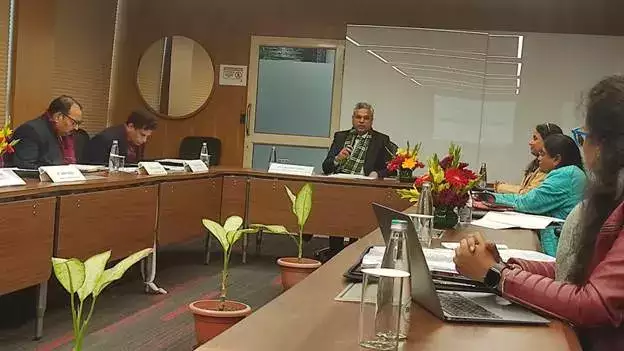First meeting of Social Audit Advisory Body reviews social justice schemes (ET)

- 23 Jan 2024
Why is it in the News?
The first meeting of the Social Audit Advisory Body (SAAB) was held last week at the conference hall, Dr Ambedkar International Centre, New Delhi.
What is the Social Audit Advisory Body (SAAB)?
- Social Audit Advisory Body (SAAB) is a first-of-its-kind advisory body in India.
- It is set up under the National Institute of Social Defence (NISD), which functions under the Department of Social Justice & Empowerment (DoSJE), Ministry of Social Justice and Empowerment.
- It will guide the Ministry as it institutionalizes social audits for each of its programs.
- It will support the Social Justice Cell of the Social Audit Unit members in developing their abilities.
What is a Social Audit:?
- A social audit is a procedure that involves looking over and evaluating a plan or program.
- People actively participate in the process, which involves comparing government data with actual ground realities.
- Important tenets of SA include:
- Protection of citizens (Suraksha)
- Participation (Bhagidari), and
- Information access (Jaankari).
Implementation of Social Audit:
- The Mahatma Gandhi National Rural Employment Guarantee Act (MGNREGA), among other hallmark programs, now include the provision of Social Audit (SA) with the efforts of the Union Government.
- In order to guarantee SA through specialized Social Audit Units at the state level, DoSJE developed the National Resource Cell for Social Audit (NRCSA).
- The first state to put a social audit statute into effect was Meghalaya.
Significance: Promote transparency and accountability,
-
- strengthen institutions at the grassroots level etc.
Challenges: Lack of awareness among stakeholders, apathetic attitude of implementing agency etc.
Steps for SocialAudit:
- Orientation and Sensitization:: Conducted by the implementing agency.
- Presentation: Creating a social audit team.
- Verification: Verifying information with beneficiaries, inmates, stakeholders, and institution staff.
- Validation: Presenting the initial report for validation.
- Presentation and Action: Sharing findings at the district level with all stakeholders present.
